Periungual warts are the warts around the nails, which are common in nail biters In the beginning, these are pinhead in sized, shiny, smooth, translucent and usually discrete They grow in weeks or months to pea size, become rough, dirty brown grey or black and horny These warts become fissured, inflammed and tender A All warts (or "verrucae") are caused by Human Papilloma Virus (HPV) On the hands, they're referred to as common warts; A Growths that form around or under nails are called periungual warts, doctorspeak for fingernail warts Nail biters are especially prone

View Image
How to get rid of warts under your fingernail
How to get rid of warts under your fingernail- Periungual warts are warts that cluster around the fingernail or toenail They may extend under the nail plate and may lie adjacent to the nail matrix Periungual warts pose a management challenge because of poor accessibility, recalcitrance, the possibility of cosmetic disfigurement of the nail, and a high recurrence rate 1 Periungual warts develop around the finger and toenails As they expand, they can cause discomfort or pain and may disrupt nail growth




Ungual Warts Comparison Of Treatment With Intralesional Bleomycin And Electroporation In Terms Of Efficacy And Safety Di Chiacchio 19 Journal Of The European Academy Of Dermatology And Venereology Wiley Online Library
There are five main types of warts on fingers – common warts, flat warts, butchers' warts, palmar warts and periungual warts Wart on fingernail?On the bottom of the feet they're called plantar warts; Warts are an infection of the epidermis with human papillomavirus (HPV) Warts that involve the periungual skin or subungual area are typically associated with HPV subtypes 1, 2, 4, 27, and 57 Butcher's warts may also affect the nail apparatus and are due to HPV 2 and 7
The periungual warts are rough grainy bumps around and under the nail They are usually small bumps around the toenails or fingernails Periungual warts also lead to loss of cuticle and increase the risk of self tissue infection They are usually skintoned ,pink,tan or whitePeriungual warts are warts that cluster around the fingernail or toenail They appear as thickened, fissured cauliflowerlike skin around the nail plate Periungual warts often cause loss of the cuticle and paronychia Nail biting increases susceptibility to these wartsPeriungual warts usually manifest around the nails of your fingers and toes, and can cause a considerable amount of discomfort, even growing and extending under the nail itself It is for this reason that periungual warts are often more difficult to treat than common warts or verrucas , as conventional medicines like salicylic acid cannot properly reach the affected area
We present a 32yearold female with subungual and periungual warts of the fingers of both hands and first right toe She was treated with 5fluorouracil twice daily under occlusion plus percent urea After a month she presented with grayish transverse melanonychia along and parallel to the lunula with some maceration of the periungal folds "The warts start in the skin surrounding the nail and are called periungual warts Then they can extend underneath the nail, becoming subungual warts," says Steve Daveluy, MD, FAAD, Assistant Professor of Dermatology at Wayne State UniversityUnder and around your fingernails, you're most likely to find periungual warts 7 They most commonly affect children and young adults, and nail biters are at an increased risk from under nail




Subungual Wart Of The Fifth Right Fingernail In A 7 Year Old Girl Download Scientific Diagram




Pdf Use Of Imiquimod In The Treatment Of Chronic Periungual Warts
Symptoms of periungual warts include a cauliflower appearance, which spread quickly and in clusters surrounding the nails, or under the nail bed You will see the small rough bumps, which will become painful when left untreated Treatment of periungual warts may include excision, which may require removal of the toenailOn the genitals or around the anal area they're called genital warts Take a deep breath Warts of this kind often cause damage to the nail either by lifting the nail from the skin or causing the nail to partially detach If they extend under the nail, then the patient may suffer pain as a result Sometimes periungual wart infections resemble the changes that are found in onychomycosis In worst cases, if the infection causes injury




Ungual Warts Comparison Of Treatment With Intralesional Bleomycin And Electroporation In Terms Of Efficacy And Safety Di Chiacchio 19 Journal Of The European Academy Of Dermatology And Venereology Wiley Online Library




Duct Tape Forever And For Warts Album On Imgur
It is called a periungual wart when it grows around or beside the nails of the fingers or the toes It is referred to as a subungual wart when it grows underneath the fingernails or toenails Periungual Finger Warts Periungual warts are elevated rough bumps and have irregular borders around them These warts lead to peeling and roughening of the skin on the fingers or toes Subungual Warts Nailbiting increases susceptibility to these warts as it leaves small open lesions through which the virus can enter the skin This type of wart is call a periungual wart Periungual warts can damage the nail They may cause the nail to fully or partially detach or become deformed If they grow under the nail, they may cause pain That painful patch of raised skin was in fact, verruca or periungual wart These warts crop up on your skin if a strain of the Human papillomavirus (HPV) comes in



What Are Periungual Warts Almawi Limited The Holistic Clinic




Melanonychia Induced By Topical Treatment Of Periungual Warts With 5 Fluorouracil
Periungual warts form around your fingernails or toenails They start small, about the size of a pinhead, and slowly grow to rough, dirtyThese warts are called periungual warts Without proper care, periungual warts can cause skin infection around the nail To prevent periungual warts, avoid biting your fingernails and keep your hands dry and clean Warts are caused by the Human Papillomavirus and often occur on the hands, in areas where the skin has been broken Warts growing near the nail bed, or periungual warts, are part of the common wart family and are caused by the human papillomavirus (HPV) source Mayo Clinic Periungual warts are unique because they develop around the nail on the foot and hand If the virus growing in and around the nail isn't treated, the nail may detach from the skin
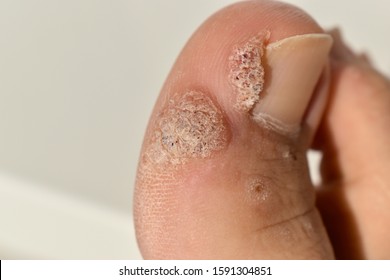



Wart Nail Hd Stock Images Shutterstock



Dermnet Dermatology Pictures Skin Disease Pictures
A periungual wart assumes a bumpy or cauliflower appearance around the nails Initially, they measure the size of a pinpoint, almost invisible At their infancy, these warts have a shiny or translucent look and a smooth texture Over time, the rough and bumpy traits become present, and the areas of the warts become inflamed Periungual warts appear around fingernails and subungual warts occur under fingernails Both start out tiny, around the size of a poppy seed, but grow in size These warts also tend to spread, Periungual warts are a lot similar to the appearance of common warts, tan, or brownish in colour, with a rough surface They appear under, or around toenails and fingernails In the beginning they are about the size of a pinhead, smooth and virtually impossible to spot But as the weeks progress, they grow to pea size



Tumor Wart Curettage



1
Most often, warts are harmless growths that go away on their own within 2 years Periungual or plantar warts are harder to cure than warts in other places Warts can come back after treatment, even if they appear to go away Minor scars can form after warts are removed Common warts are caused by human papillomaviruses of different biological types (Figures ) They are benign, weakly infective, fibreepithelial tumours with a rough keratotic surface Usually periungual warts are asymptomatic, although fissuring may cause pain Subungual warts initially affect the hyponychium, growing slowly toward the nail bed and finally elevating the nail Periungual warts, also called Subungual warts, are warts appear around or under fingernails and toenails These warts start off with the size of a pinhead, smooth and not that visible to the naked eye As weeks pass by, these will grow to the size of a pea, then turn into irregular and rough bumps




Subungual And Periungual Warts What Are They What Is It Warts Types Of Warts Healing




Ungual Warts Comparison Of Treatment With Intralesional Bleomycin And Electroporation In Terms Of Efficacy And Safety Di Chiacchio 19 Journal Of The European Academy Of Dermatology And Venereology Wiley Online Library
Periungual warts can cause nail dystrophy and destruction Pain due to plantar warts (myrmecia type) interferes with walking and sporting activities, causing knee or hip pain In epidermodysplasia verruciformis the specific HPV types involved can cause cutaneous squamous cell carcinomas Periungual warts causing nail dystrophy Periungual warts These are sometimes difficult to diagnose and are found around and under the nail Plane wart These flat warts, often resembling a boil appear on on the hands, legs, face and other parts of the body Filiform warts This wart, which often appears on the face, has a single stalk with a few heads on it Periungual warts treatment Periungual warts can be very hard to remove especially if they spread to the nail plate or under it In the latter case they are called subungual warts which are not only painful but can also damage your nail plate if left untreated The conventional treatments that doctors will suggest to remove periungual warts are




Day One Life Long Biter Periungual Warts Have To Stop Any Tips Using Salicylic Acid On The Warts And They Are Getting There Hopefully That Will Stop A Few Of You From




Periungual Warts Youtube
If it's been there for at least months, or I'd guess probably a year at that size, I would say it's 100% a wart Don't be too fraught, that wart doesn't look to be under the fingernail But I'm willing to bet it's still going to be very tough to get rid of Don't waste your time with destructive methods Nail Polish Remedy The application of clear nail polish is a popular home remedy for the removal of warts The polish is used to cover the wart, creating an airtight seal around the growth This effectively suffocates the virus, causing the gradual death and shedding of the infected skin cellsCryotherapy freezes the wart by applying liquid nitrogen, creating a blister to form around and under it The dead tissue comes off in a week or so The dead tissue comes off in a week or so It may be necessary to have repeat treatments




Cutaneous Warts An Evidence Based Approach To Therapy American Family Physician




3 At Home Wart Remedies That Actually Work Cleveland Clinic
The periungual wart is an extremely unpleasant in appearance and sensation growth on the skin of the fingers, in close proximity to the nail In some patients, the warts develop immediately under the nail plate, which causes additional inconvenience and discomfort The nail at the same time can become uneven, rough, sometimes flaking andPeriungual warts are one of the lesser known types of wart Like many other warts the condition get its name from where the growths appear Periungual warts will grow around nails and are often quite difficult to detect at first What is a periungual wart? Soak your finger in warm water, then file away the edge of the nail and across the top of the nail with a smoother file to make the nail thinner If you can, also file away at whatever part of the wart you can reach Then be sure to throw away the file to avoid spreading more warts 1 Try overthecounter treatments




Swelling Of The Proximal Nail Fold Caused By Underlying Warts Semantic Scholar



Is This A Start Of A Subungual Wart Ive Treated It With Acv And Duct Tape For Two Das Just To Be Sure This Is A Repost Btw Warts
As mentioned above, a periungual wart is a growth that occurs alongside your nailsPeriungual warts are typically found along the toenails and fingernails These are roughlooking warts wherein the outer surface of the wart is dry Periungual warts can cause some degree of discomfort as they can extend under the nails These warts generally don't have an inflamed appearance but can get further infected if not treated Many of us have had treatment problems related to periungual warts Frank's technique was employed by us with some success, but it was found that one addition to the management of these verrucae aided us a great deal 1 The regimen is as follows Fullstrength trichloroacetic acid is applied to the wart and allowed to dry




Periungual Warts Pi Uptodate




Transillumination A Simple Tool To Assess Subungual Extension In Periungual Warts Ashique K T Kaliyadan F Indian Dermatol Online J
Ungual and periungual warts Warts growing under and around nail beds can be difficult to treat due to difficulty accessing the wart, and pain caused by treatmentAround the fingernails they're called periungual warts;Initially, periungual warts present as very small, fleshtoned, raised lesions with a smooth texture As the warts mature, they adopt a ragged, rough appearance When positioned close to the nail, the wart can spread underneath, raising the nail It is common for some warts to cause discomfort, but if periungual warts become too invasive to the




A Mosaic Plantar Wart B Periungual Wart Source Dermatology Download Scientific Diagram
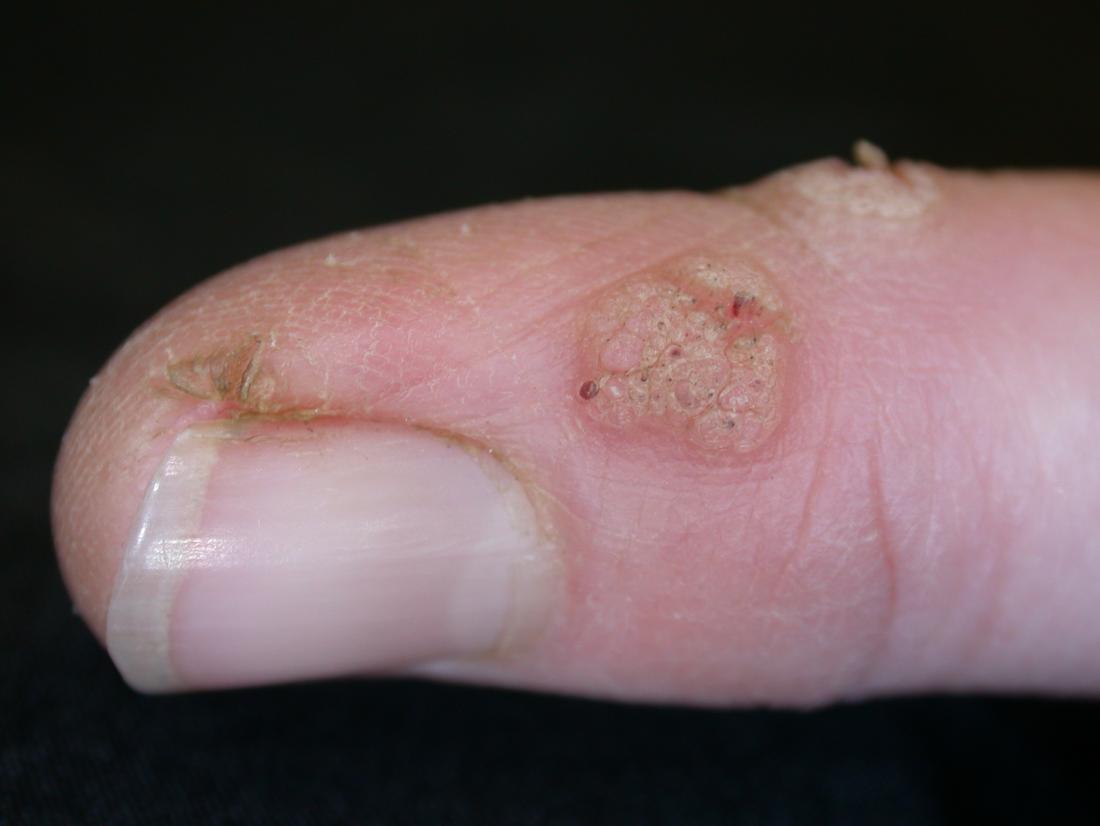



Periungual Warts Pictures Treatment And Prevention
Warts are caused by an infection with the human papilloma virus (HPV) The virus causes an excess amount of keratin, a hard protein, to develop in the top skin layer (epidermis) The extra keratin produces the rough, hard texture of a wart Read more about the causes of warts Broken skin is easily infected by the virus, therefore you should exercise caution when you have cuts and avoid contact with infected individuals Warts under the nails are called subungual warts They can be under the toenails or fingernails, and the location makes treatment more challenging than in the case of more easily accessible warts




Transillumination A Simple Tool To Assess Subungual Extension In Periungual Warts Ashique K T Kaliyadan F Indian Dermatol Online J




Treatment Of Nongenital Cutaneous Warts American Family Physician
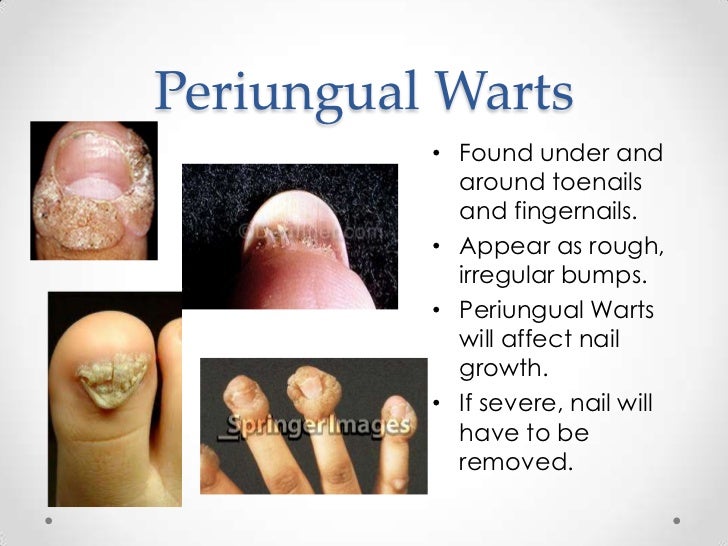



Warts
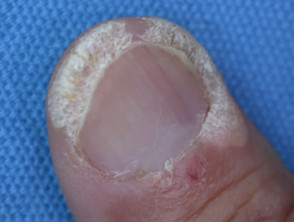



Viral Warts Dermnet Nz
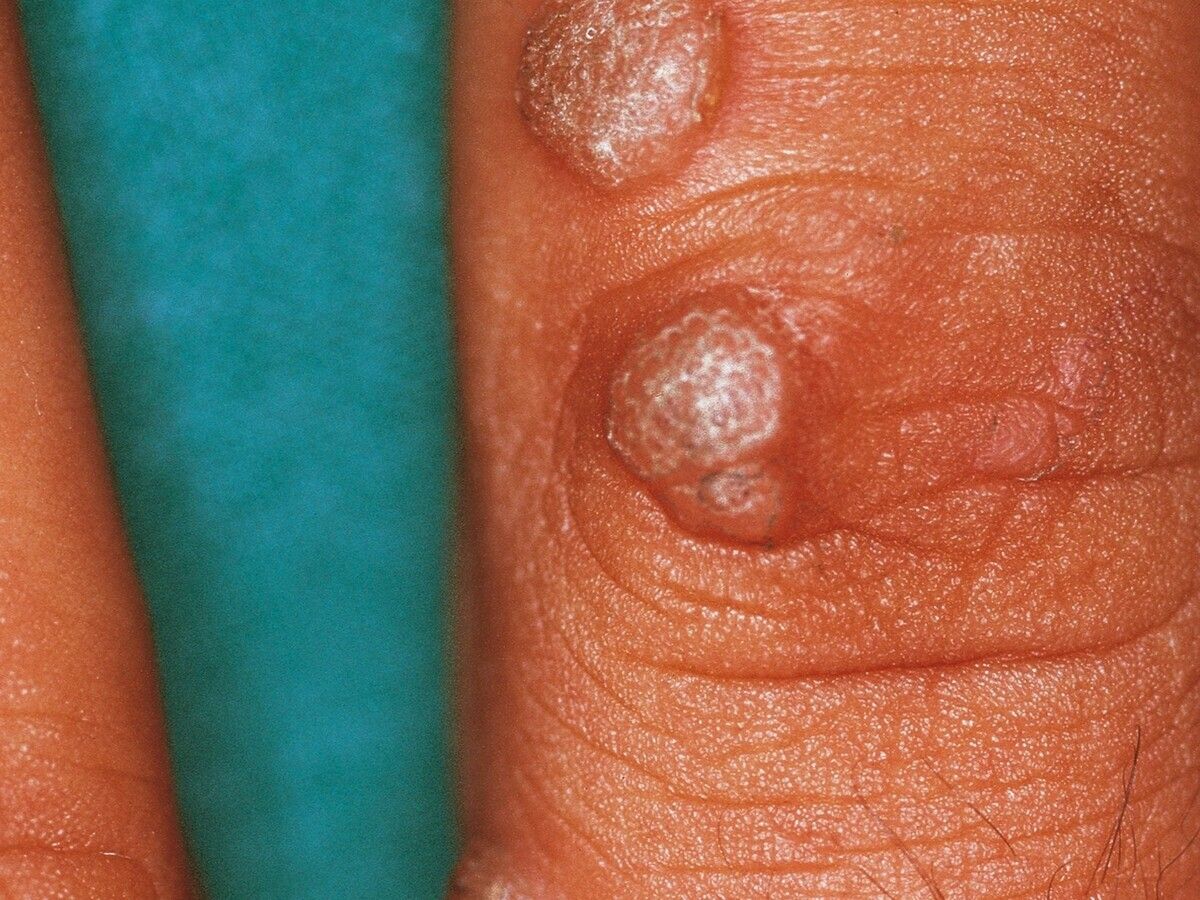



Verruca Vulgaris Altmeyers Encyclopedia Department Dermatology




Periungual Warts Pictures Treatment And Prevention
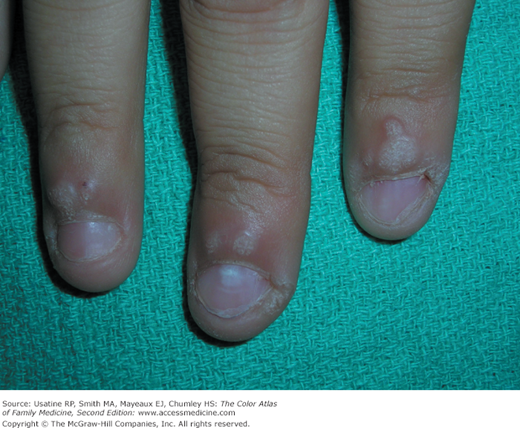



Common Warts Basicmedical Key




Periungual Warts Symptoms Treatment And Prevention




Removing A Wart On Your Finger At Home And Professionally




The Peri Sub Ungual Wart Difficult To Manage The Consent No Promises Implied Given Case Examples Enclosed



2 Months Of Healing Gonna Take A While For The Nail To Return To Normal But There Is Hope For Periungual Wart Fighters Warts
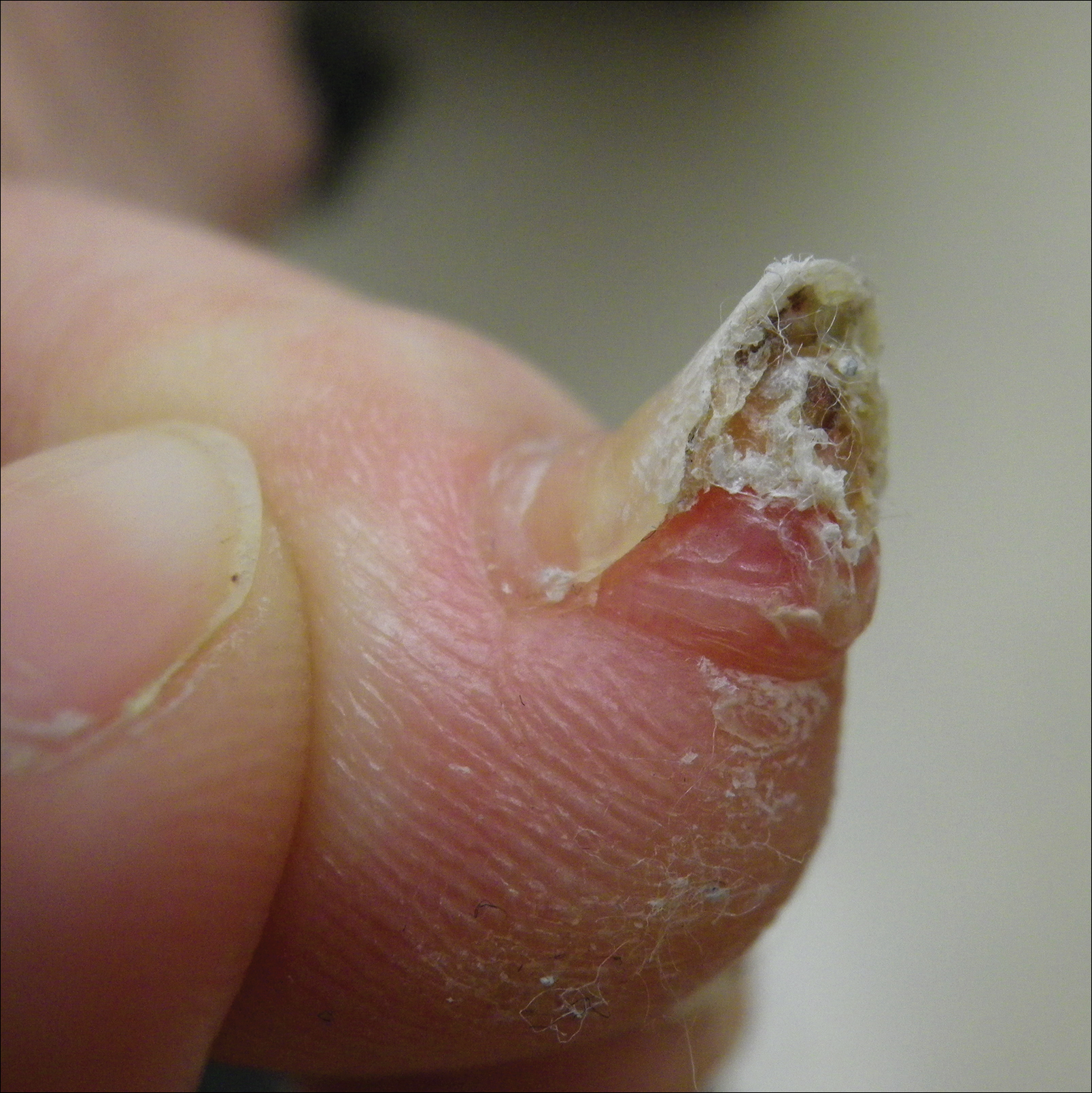



Subungual Exostosis Mdedge Dermatology




A Case Of Subungual Wart Invading The Nail Root Successfully Cured With Surgery Combined With Photodynamic Therapy Li J Mao S Huang L Wu M Mo X He F Zhao L Zhang




How Periungual Warts Work Howstuffworks




Melanonychia Induced By Topical Treatment Of Periungual Warts With 5 Fluorouracil




View Image




Pin On Dermatosurgery
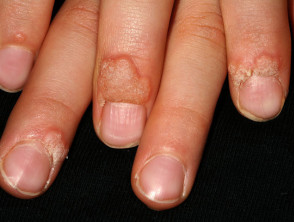



Viral Wart Dermnet Nz




Use Of Imiquimod In The Treatment Of Chronic Periungual Warts Semantic Scholar



How To Get Rid Of Common Warts Under The Nails




View Image
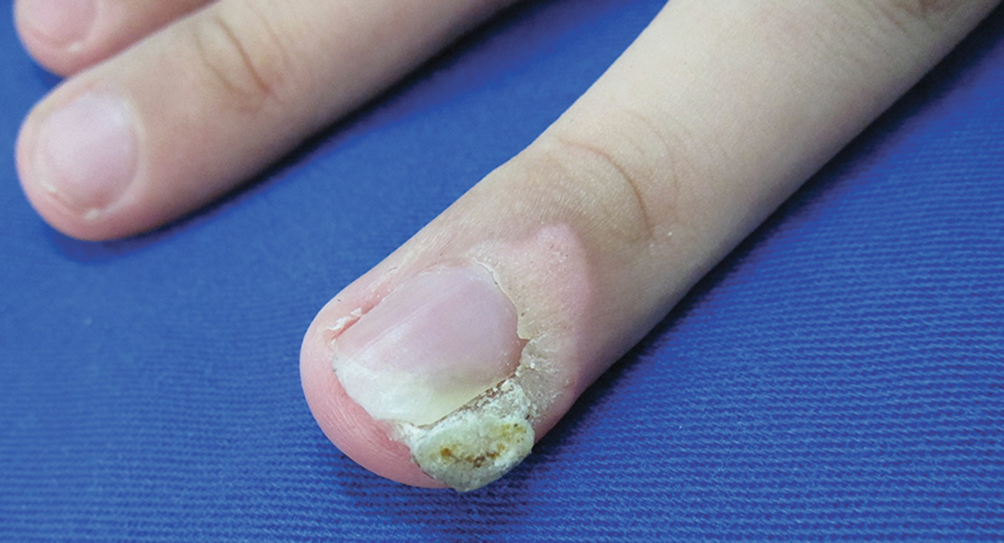



Nail Tumors Springerlink




Scielo Brasil Multipuncture Technique With Ingenol Mebutate In The Treatment Of A Periungual Wart Multipuncture Technique With Ingenol Mebutate In The Treatment Of A Periungual Wart




Duct Tape Forever And For Warts Album On Imgur



What Are Periungual Warts Almawi Limited The Holistic Clinic
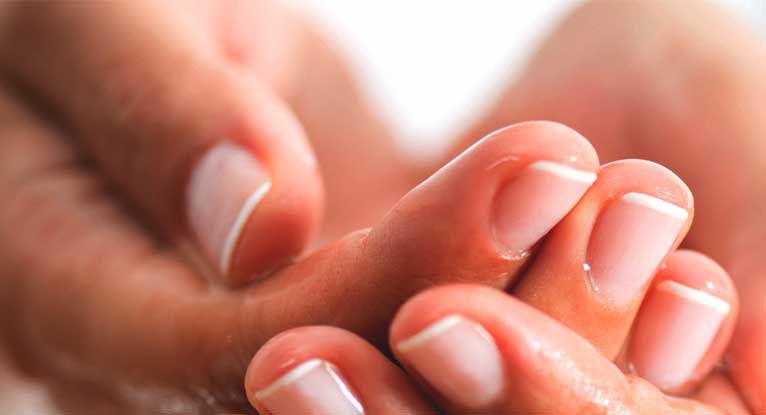



Periungual Warts Identification Treatment And More



Periungual Wart Nail And Distal Digit
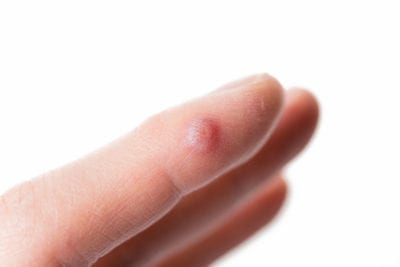



Dermatologist For Wart Removal Services In South Florida Clearlyderm



1




View Image




Subungual Wart Medlineplus Medical Encyclopedia Image
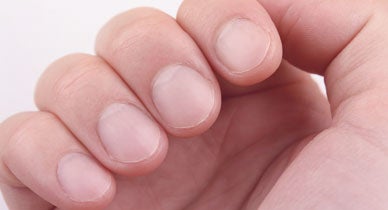



Periungual Warts Identification Treatment And More



1




View Image



Warts




Pdf Use Of Imiquimod In The Treatment Of Chronic Periungual Warts



Http Www Surgicalcosmetic Org Br Exportar Pdf 11 11 N4 749 En Use Of Imiquimod In The Treatment Of Chronic Periungual Warts




Scielo Brasil Diphenciprone As A Therapeutic Alternative To Exuberant Periungual Warts Diphenciprone As A Therapeutic Alternative To Exuberant Periungual Warts




A Wart Under Fingernail And Treatment To Cure It
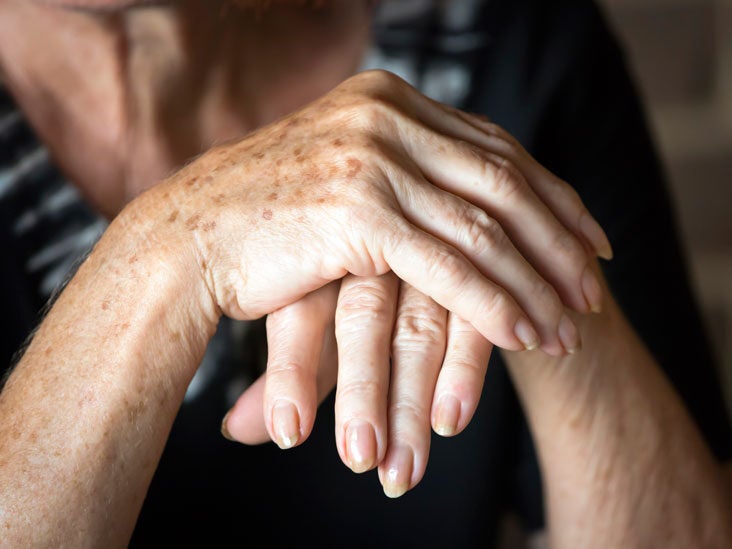



Periungual Warts Identification Treatment And More




Efficacy Of The Combination Of Superficial Shaving With Photodynamic Therapy For Recalcitrant Periungual Warts Sciencedirect



1
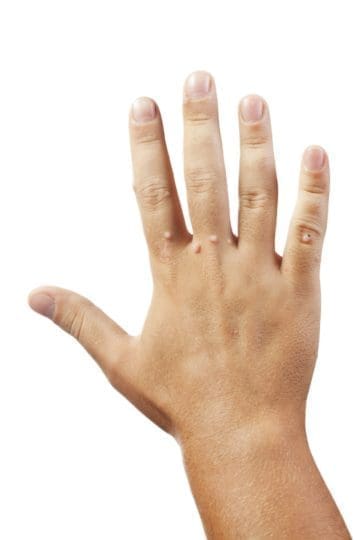



Warts Wart Removal Wart Freeze Familydoctor Org



Periungual Warts Treatment Options Actforlibraries Org



Hi Ladies I Have A Wart Under My Nail And I Can T Seem To Get Rid Of It Do You Have Any Ideas To Make It Go Away Sorry For The
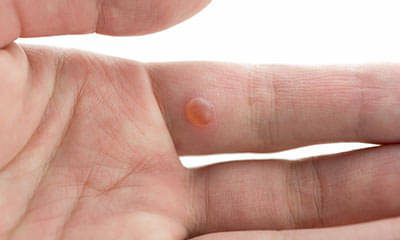



Homoeopathy Treatment Of Periungual Warts By Dr Jyoti Singh Lybrate
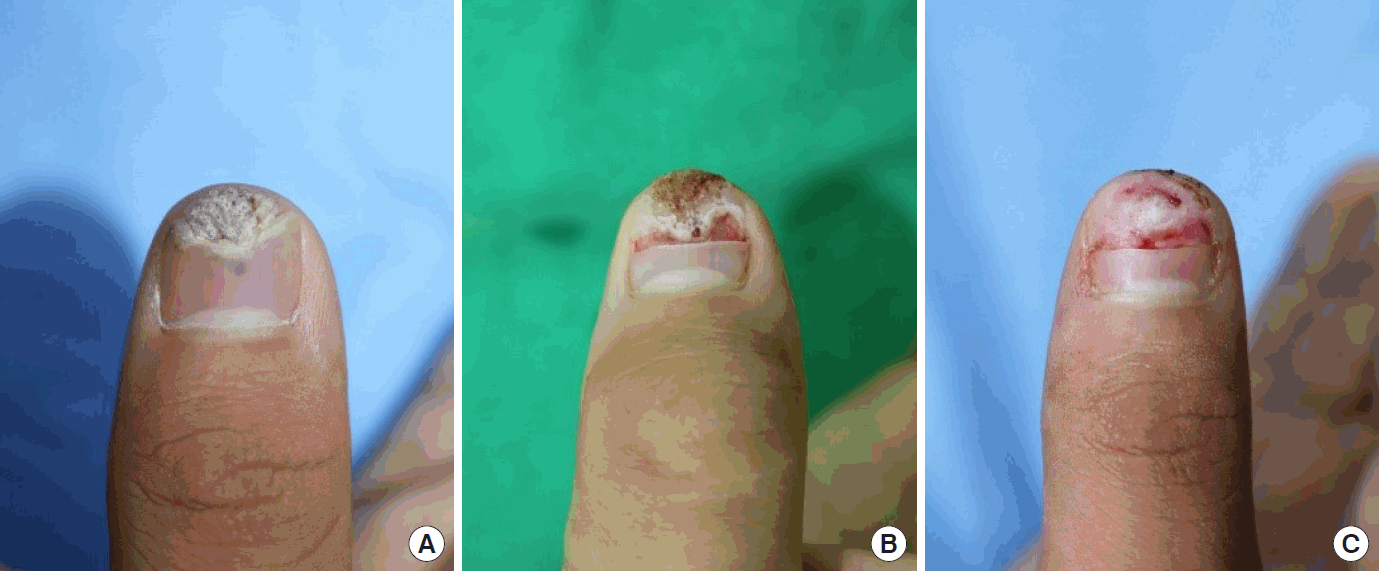



Journal Of Wound Management And Research
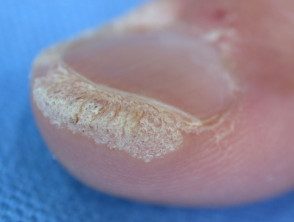



Viral Wart Dermnet Nz
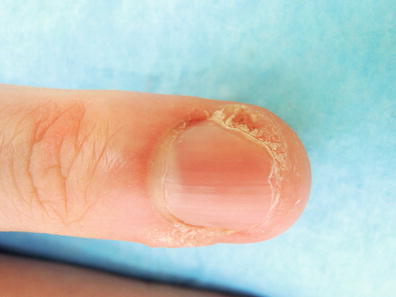



Periungual Warts Springerlink




I M Embarrassed About My Warts Matthew Mittelbronn Md Dermatologist




Current And Emerging Concepts In Wart Treatment



What Are Periungual Warts Rocky Hill Newington Middletown Glastonbury Bristol And Kensington Ct Foot Doctor




Periungual Warts Are Warts That Cluster Around The Fingernai




Persistent Periungual Wart Starting To Creep Under Fingernail Warts




What Is Periungual Wart Removal Official Dr Numb Usa




Periungual Warts Symptoms Treatment And Prevention




Periungual Warts Symptoms Treatment And Prevention




Periungual Warts Consultant360
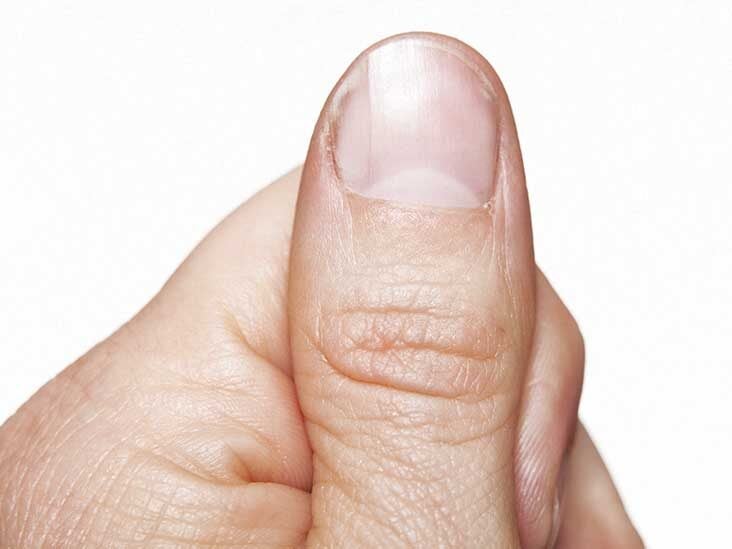



Periungual Warts Identification Treatment And More




A Periungual Wart B Crusts Were Formed Three Days After Treatment Download Scientific Diagram




Periungual Warts Before Treatment Open I
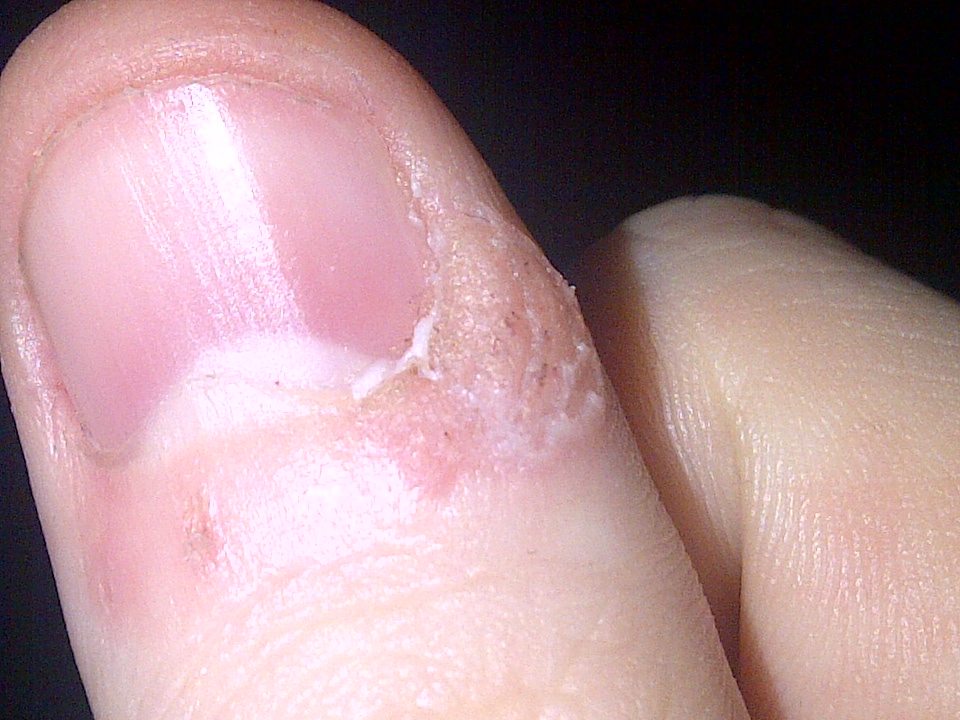



Periungual Warts Description With Photos Causes Symptoms Removal Options And Recommendations Of Doctors
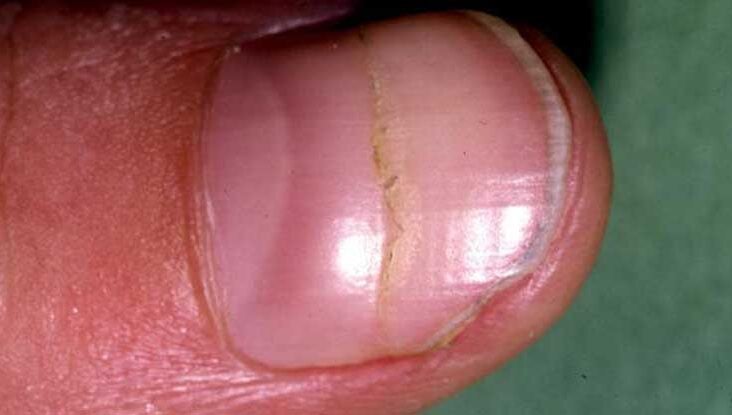



Periungual Warts Identification Treatment And More




07 06 19 Hpv Warts Under My Fingernail Youtube




What Causes Warts And How To Get Rid Of Them Dermatology Associates Of Central Nj Dermatologists
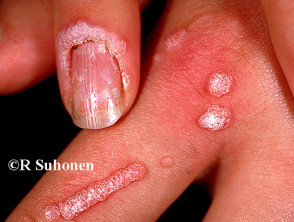



Viral Wart Dermnet Nz
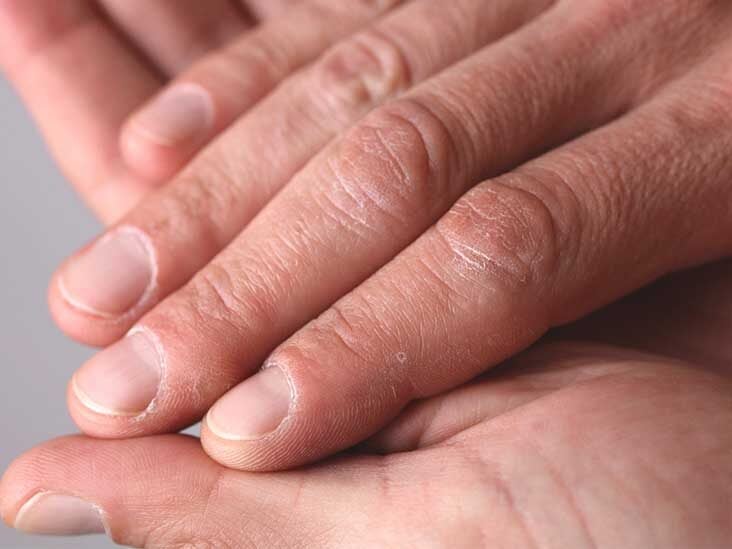



Periungual Warts Identification Treatment And More




Melanonychia Induced By Topical Treatment Of Periungual Warts With 5 Fluorouracil




Warts



25 Year Old Periungual Wart 24 Hours On Sa What Do I Do Now More Info In Comments Warts




Duct Tape Forever And For Warts Album On Imgur




Nail Neoplasms Park 17 The Journal Of Dermatology Wiley Online Library




The Human Papillomavirus And Its Role In Plantar Warts Clinics In Podiatric Medicine And Surgery




Can You Identify These Nail Lesions Consultant360




Essential Oils For Periungual Warts
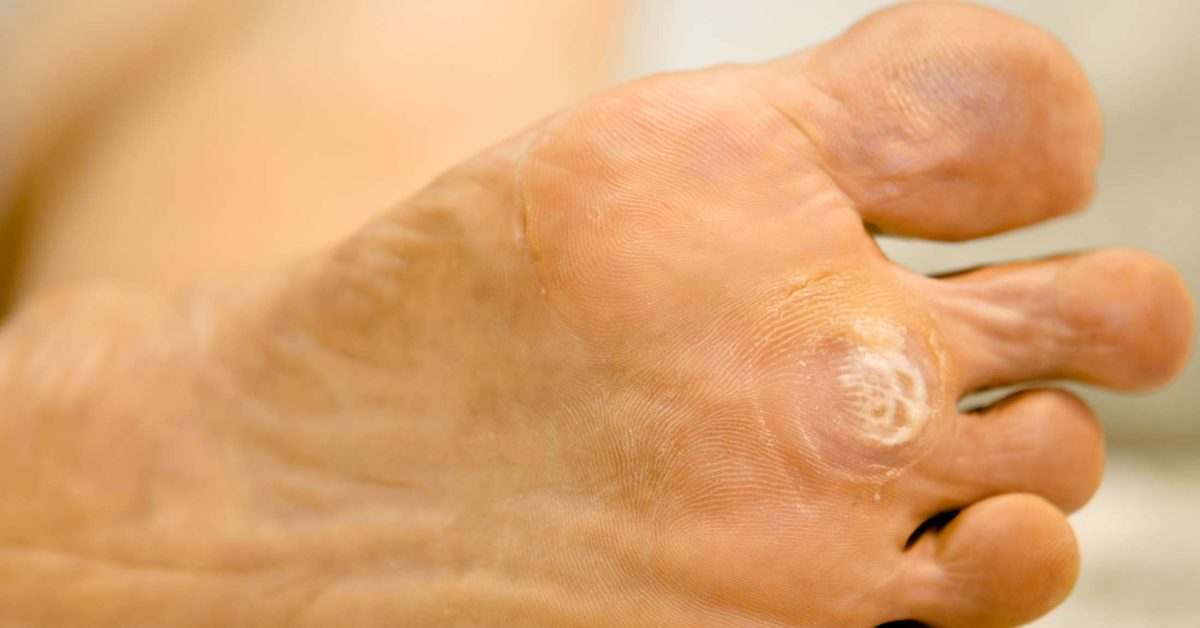



Plantar Warts Symptoms Causes And Treatment




Periungual Wart Wikipedia




The Diverse Methods Of Bleomycin Delivery In Cutaneous Warts A Literature Review Kaul 21 Dermatologic Therapy Wiley Online Library
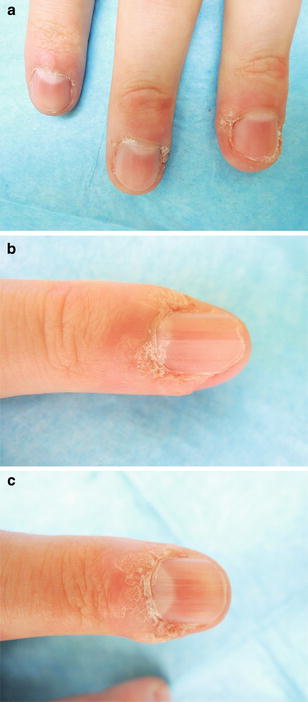



Periungual Warts Springerlink




What Are Periungual Warts With Pictures




Hpv Symptoms Warts Genital Warts Cancer Everyday Health




Periungual Warts Completely Cleared With Dpcpi A B Proximal Nail Download Scientific Diagram



0 件のコメント:
コメントを投稿